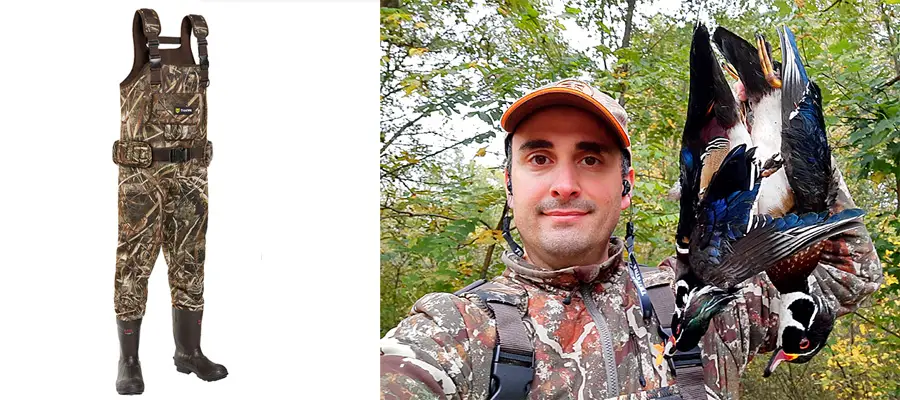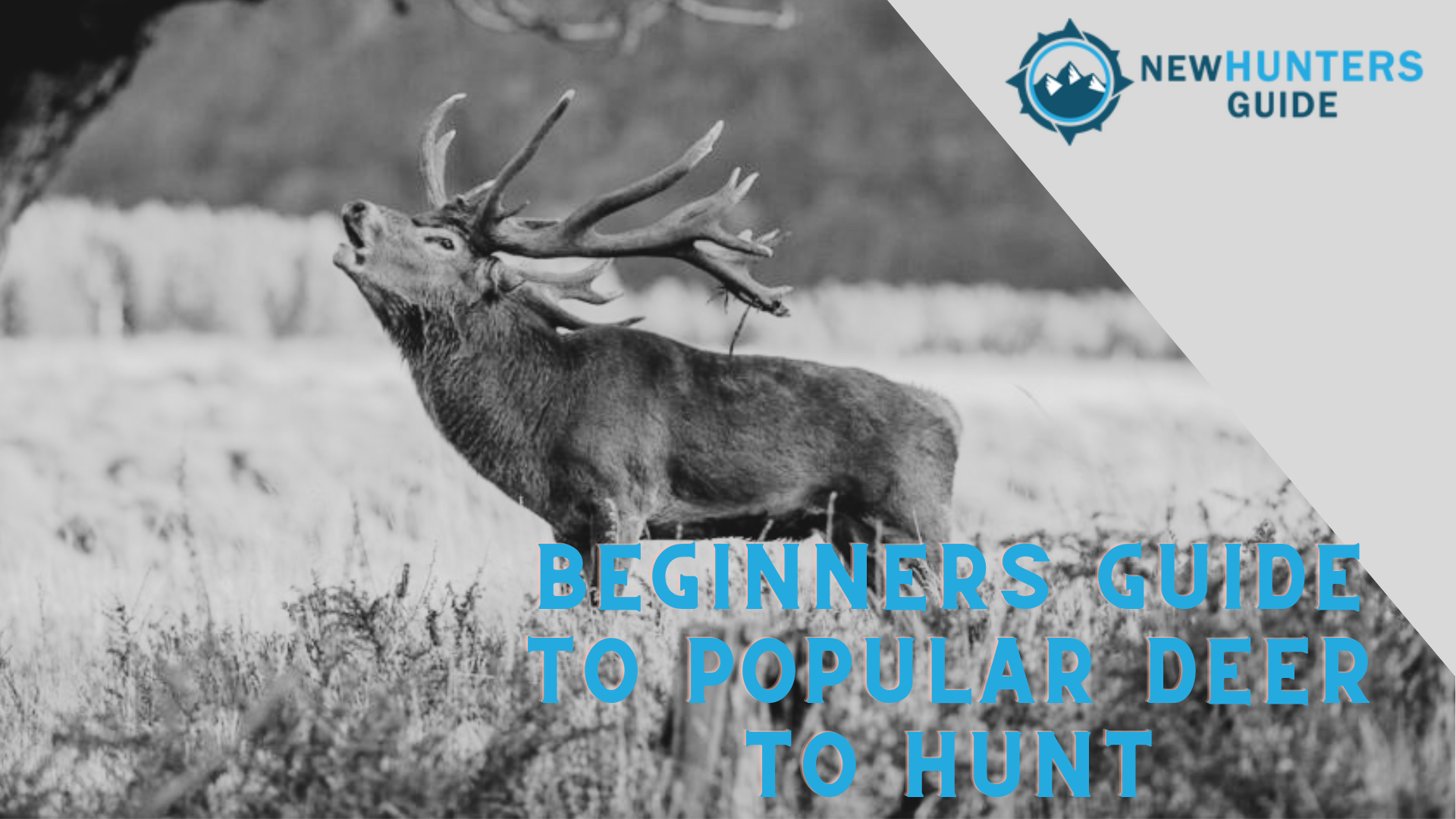How do you find out what really works when it comes to waterfowl hunting ammo? Well, you talk to a lifelong hunter, sporting clays champion, and owner of one of the most innovative companies in the hunting industry, Jimmy Muller of Muller Chokes.com. On this episode we dig into some of the nitty gritty about waterfowl ammo, what works, what doesn’t, and why.
The TideWe DeepWade zipped hunting waders are some of the best breathable waterfowl hunting waders on the market. I was very impressed with the quality and features of these waders. They are very well thought…
The TideWe Seeker Neoprene Hunting Waders are a very unique piece of gear with some serious strengths. They are the best waders for the money that I have found thus far. I nearly passed on…
What is the number 1 thing holding people back from becoming great hunters? It is a question that can be answered, and in this episode, I go in depth to help you not just realize the biggest thing holding hunters back, but also what you can do to overcome it!
Get your FREE Tetra Hearing 2-Year Extended Service Plan. Simply add this plan to your cart and use this code at checkout to make it free: NewHuntersGuide
How early should you arrive at your deer stand in the morning vs. in the afternoon? The answer is almost never as clear cut as people want it to be. But that is always the reason so many hunters have such limited success. On this episode I talk about several of the factors that impact when deer will be in front of your stand and when you should get there to hunt those deer.
Getting better at waterfowl hunting does not happen by accident. Last season I did a series of things different, smarter, and better, that resulted in a much more successful season. Not only did I take more birds than ever before, but I did that while taking fewer shots and seeing fewer birds as well!
Get your FREE Tetra Hearing 2-Year Extended Service Plan. Simply add this plan to your cart when purchasing a Tetra Hearing device and use this code at checkout to make it free: NewHuntersGuide
Wood ducks are one of the most pervasive and beautiful ducks in all of North America, they are a treasure to hunt and make good eating too. On this episode I am going to walk through the basics of how to hunt wood ducks and the kind of gear and strategy you need to be successful.
Get your FREE Tetra Hearing 2-Year Extended Service Plan. Simply add this plan to your cart when purchasing a Tetra Hearing device and use this code at checkout to make it free: NewHuntersGuide
How can you dramatically improve your success rate hunting whitetail deer? In this podcast episode I share how I went from a 0% success rate to 83%. And no, you do not need to spend a bunch of money or have hundreds of acres of private land. It’s all about strategy and changing the way you think about hunting.
When I began hunting deer, I had no idea what I was doing. Like most people I heard what worked for others, received some tribal knowledge, watched some videos, read some articles and just assumed if I did those things it would work. I was very wrong. The issue is a lot of the hunting information I received was just plain not true, it was laced with myths, misinformation, and popular hearsay. What was true, was often only applicable to very specific situations and circumstances, which were very different from my own circumstance.
Don’t get me wrong, I gained some ground by consuming and practicing the conventional wisdom I received. I started taking some deer. But the breakthrough happened when I stopped focusing on what other people said worked for them and started focusing on the deer, what they were doing, and when.
Doing this however put me in a very difficult position. I liked to hunt a certain way, in a certain place, at a certain time of day, and at a certain part of the season. The deer however did not conform at all to my preferences. I had to completely dismantle the way I hunted, break all my traditions, change all my comfy habits, and do new and uncomfortable things to align with when and where the deer were around. It was mentally difficult to make those changes, and most hunters never do.
But when I decided to stop hunting the way I wanted to hunt and start hunting according to the deer patterns and preferred locations, I began to experience tremendous results. To the level where we shot 5 bucks in 6 hunts. I do not mean six years, but six times sitting in the woods. Listen to the entire podcast episode to get the details and how to apply this to your deer hunting.
Deer hunting is a cherished tradition for outdoorsmen and even a tradition of great importance for some families. Deer hunting provides quite a lot when it comes to benefits, being both a thrilling hunting experience…
Rain may have little effect on deer movement, or it may have drastic impact. If you can determine how the weather will impact hunting, you can develop a strategy for how and when to hunt whitetails when it’s raining. Can you hunt deer effectively in the rain? The answer is both yes and no, depending on the circumstances.
Deer need to eat, mate, and move, period. They can only sit for so long and do not like to miss meals. So while light to moderate rain may impact their movement briefly, they will eventually shrug it off and begin returning to their normal patterns if it continues for any period of time. Severe weather is another story though.
When the weather turns very bad with heavy rain, thunder, gale force winds, blizzard conditions, they will usually sit and wait it out. This type of weather is rarely sustained for very long and once the weather breaks the deer will be up and moving again, perhaps more so than usual trying to find food to make up for missed meals.
So hunting light to moderate rain can be fruitful, particularly if that weather has continued for a few days and the deer have normalized their routines based on it. But really bad weather is not worth hunting in. EXCEPT for possibly hunting the ending fringe of that weather so you can be in the woods still and ready for when the weather breaks and deer movement ramps up.
The gear that you hunt with and the length of time you spend hunting in the rain are also major factors. If your gear is reasonable, you spend short stints in the woods, and you hunt advantageous times of day or before/after incoming fronts, then you can be very effective hunting whitetails in the rain.
I have had significant success hunting both does and bucks on rainy days. But the story is always the same, even after being in the woods for 12 or more hours, deer move very little during severe weather and are quick to get up when the sky clears.
Oftentimes a hunting blind is both cheaper and more comfortable than quality rain gear and I recommend that option when practical. But you can get away with poor quality rain gear and an umbrella if your plan is to wait for the weather to break in order to take down the umbrella and hunt afterwards.
The biggest issue people tend to have with rain gear is sweating and getting soaked over time because even Gore-Tex does not breathe when one side of it is soaking wet. All of the pores in the fabric become saturated and vapor cannot pass through. So, hunting in the rain for long periods of time with a rainsuit on is not a great idea. This makes using a blind even better because you do not need to worry about getting wet. I tend to keep one or two blinds up all season as options for wet days for this very reason.
The bottom line is if hunting in the rain isn’t fun for you, then don’t do it. If you are not enjoying the hunt, then save it for a day when you can enjoy it. Listen to this entire podcast episode to learn more.



